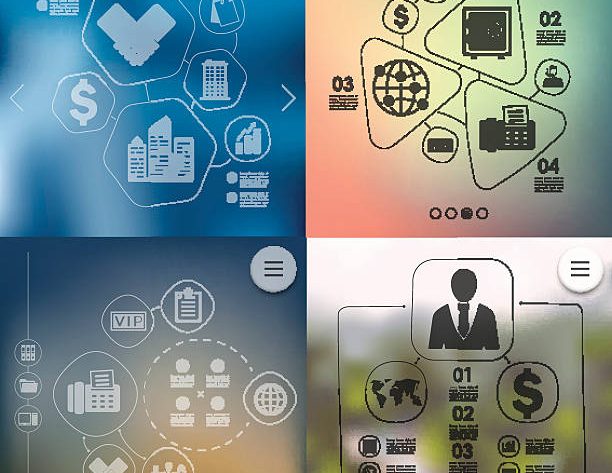If you have a B2B (business-to-business) business, ecommerce is not nice to have -it’s a must-have. Since the last few decades, the explosive growth of the e-commerce industry has pushed B2B companies to focus more on the online market.
McKinsey predicts that by 2024, online sales will account for 31% of all B2B sales. This is an increase over the previous 20%. Forrester also states that B2B e-commerce in the US is expected to reach $3 trillion by 2027 compared with $ 1.7 trillion in 2020, and offline sales are expected to remain static.
The elevated adoption of online shopping by businesses shows how important it is to keep up with the most recent B2B ecommerce trend to achieve growth.
We are here to help you transform your business with the latest trends in B2B Ecommerce.
Automation is key
In today’s highly competitive B2B marketplace, streamlining operations is not only necessary but also crucial to achieving growth precedent with fewer resources. Enter automation!
Marketing automation is used by 51% of companies, and 40% plan to use it to improve efficiency and streamline operations.
Automation has revolutionized the B2B/B2C industry. Marketing automation allows marketers to win by automating repetitive tasks and streamlining operations. They can also run campaigns, schedule posts, track performance, and more.
What is the difference between B2B Commerce Cloud and B2C Commerce Cloud in detail? Check out more information here.
This saves agents time and reduces mistakes, allowing them to focus on the important things – engaging customers and driving sales.
Automation has a profound impact on B2B eCommerce, and it encompasses many aspects:
Real-time inventory visibility
Automation allows businesses to monitor inventory levels continuously through seamless API integration. The system also generates low-stock alerts and minimizes or eliminates the need to enter data manually. It ensures that stock levels are constantly current.
Fulfillment/Order Processing
Automating order processing reduces the amount of work for customers and employees by providing them with real-time information. It generates packing slips automatically, automates order processing (from picking and verification to packing and shipping), prevents the fulfillment of canceled orders, and creates packing slips.
Customer Service
Automation can improve customer service by sending SMS/email notifications about order status and confirmations of delivery. It guides customers to the correct agents for support or directs them to relevant knowledge within your database, ensuring a swift and satisfactory solution.
Order Orchestration
Automating order routing logic ensures that orders are routed to the best fulfillment location. The system streamlines interactions with customers by generating automated quotes that include discounts and special pricing. It also maintains updated customer profiles that have order history, personal preferences, and other information.
Automation is your ally in a world of efficiency, and it can transform the B2B landscape.
Get ahead of the competition with marketing automation and 10x your business.
Mobile optimization is going viral.
Mobile optimization is essential for online retailers in order to improve user experience, reduce friction within the sales funnel, and remain competitive in the ecommerce marketplace. Online retailers need to recognize that their audience uses smartphones every day. It is not only wise but also imperative that online retailers optimize their websites for mobile usability and accessibility.
Online retailers must optimize their mobile ecommerce websites to reach their audience, who increasingly use smartphones for purchases. Mobile commerce is expected to reach $620.97 Billion by 2024. This represents 42.9% of all ecommerce.
Your website’s mobile-first design can help reduce bounce rates and cart abandonment. You can also develop a mobile-first website by considering responsive design, increasing website speed, and compatibility with various mobile devices and platforms.
Customer experience enhancement
Self-service portals are becoming more popular among B2B customers and B2C clients who enjoy online shopping. According to HubSpot’s blog, 66% of customers expect businesses to know their preferences and needs.
Today, a customer-centric sales experience is essential. It means providing customers with a seamless, easy, and personalized experience that matches their daily digital interactions.
This approach provides sales teams with tools that are easy to use, AI-based insights, and data-driven decisions, which allows them to engage customers confidently. This also means meeting the evolving expectations of customers by providing a consistent and delightful experience across all channels.
Prioritizing a customer-centric sales experience will increase customer satisfaction and drive revenue growth. It will also foster loyalty in a market that is highly competitive.
Omnichannel sales will increase.
A retail report shows that the number of companies investing in omnichannel experiences has risen dramatically. It went from just 20% to an astounding 80%.
Imagine a seamless shopping experience where the customer can seamlessly switch between channels. The magic of omnichannel is a strategy that puts the customer experience at the forefront.
Omnichannel is a more cohesive and unified approach to shopping than multichannel, which offers products on multiple platforms. It’s all about creating a harmonious symphony so that customers can enjoy a seamless and connected experience.
Video content isn’t just for B2C companies.
By 2023, the majority of internet users will be watching video. Videos will account for 82.5% or more of all online content.
Videos dominate the content landscape across social media, blogs, and websites. This trend is not limited to consumer brands but also includes a wide range of sectors. B2B companies also use videos to engage their audiences and reach out to them.
A strategic approach to video can help businesses communicate their message in an engaging and digestible format that will capture the audience’s attention and drive conversions.
HubSpot Research has consistently shown that short-form videos are highly effective at delivering ROI to marketers from 2020 until today. Businesses can increase their brand’s influence, improve customer engagement, and grow by using video marketing.
If you’re still not using videos in your marketing, now is the time to do so. They can help you take your business to a new level.
Brands invest in headless commerce infrastructure.
Recent statistics reveal that 57% are planning to use headless commerce platforms by 2023. Adoption rates are up by 50%. Retail establishments that adopted this approach achieved remarkable results, including an impressive 35% increase in conversion rates and an astounding 82% growth from 2018 to 2019.
Headless commerce architecture gives brands the power to customize and build their website by separating the front end from the back end.
One of the most compelling reasons for businesses to adopt the headless approach is its ability to create and deliver personalized shopping experiences.
The headless architecture will streamline your website budget by eliminating the need to constantly hire technical staff to make minor changes to the front end.
Consider United Airlines. It has embraced the headless model by implementing the React Progressive Web App. This provides customers with an integrated booking experience across multiple channels.




